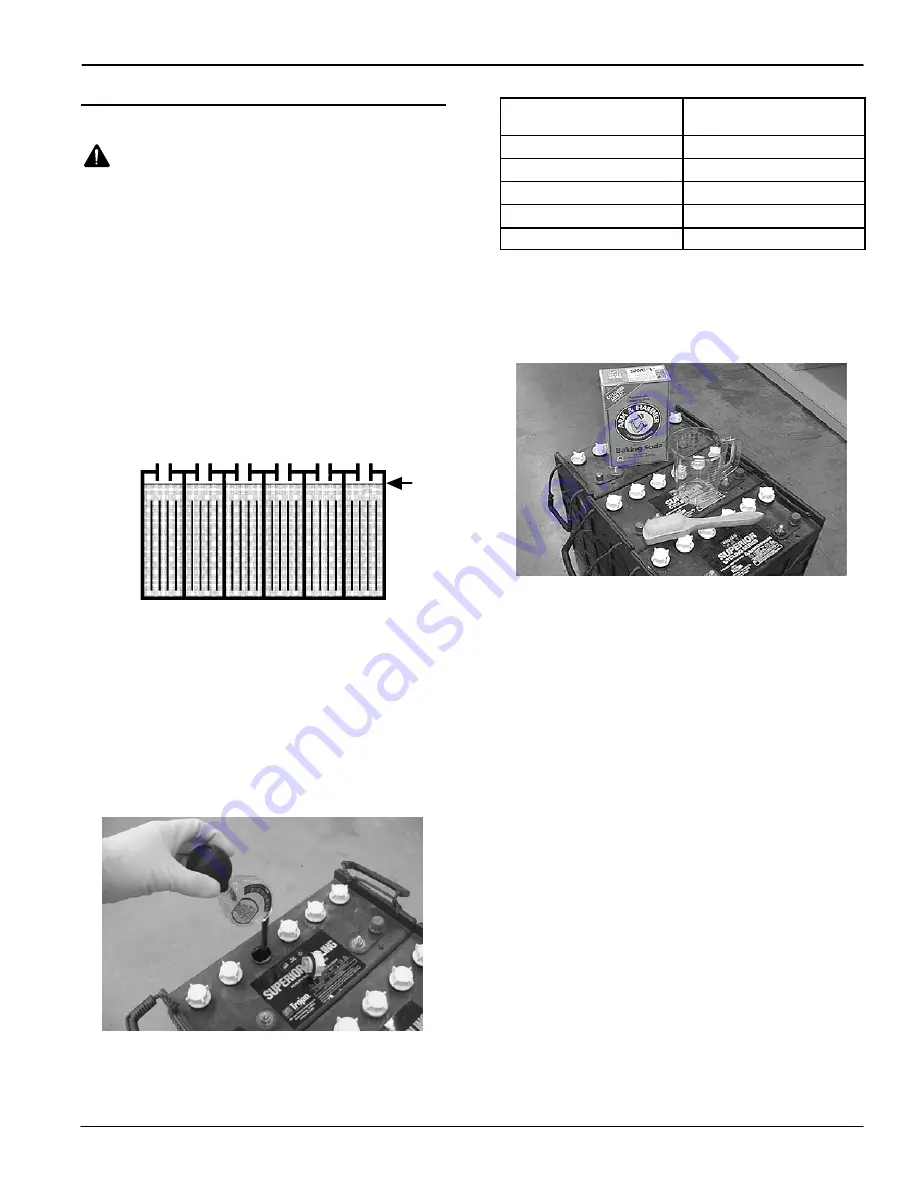
OPERATION
TS--2700/TS--3300 (05--04)
13
BATTERY MAINTENANCE
WARNING: Fire Or Explosion Hazard.
Batteries Emit Hydrogen Gas. Keep Sparks And
Open Flame Away. Keep Battery Compartment
Open When Charging.
FOR SAFETY: When servicing machine, wear
protective gloves and safety glasses when
handling batteries and battery cables. Avoid
contact with battery acid.
1. Always follow proper charging instructions
(see CHARGING BATTERIES).
2. Check fluid level (A) in each battery cell. The fluid
level should be 1 cm (3/8 in.) from the bottom of
sight tubes after charging. Add distilled water if
needed. DO NOT OVERFILL. Overfilled batteries
can overflow during charging due to fluid
expansion (Figure 24).
A
FIG. 24
3. After charging batteries, measure the specific
gravity in each battery cell using a hydrometer
(Figure 25). This will determine the charge level
and condition of the batteries. If one or more of
the battery cells test lower than the other battery
cell (0.050 or more), the cell is damaged,
shortened, or is about to fail.
NOTE:
Do not take reading immediately after adding
distilled water. The water and acid must be thoroughly
mixed in order for accurate reading.
FIG. 25
SPECIFIC GRAVITY
at 27
°
C (80
°
F)
BATTERY
CHARGE
1.265
100% CHARGED
1.223
75% CHARGED
1.185
50% CHARGED
1.148
25% CHARGED
1.110
DISCHARGED
NOTE:
Add or subtract 0.004 gravity reading for each
6
_
C (10
_
F) above or below 27
_
C (80
_
F).
4. Keep battery tops and terminals clean and dry.
a. Mix a strong solution of baking soda and water
(Figure 26).
FIG. 26
b. Brush solution sparingly over battery tops,
terminals, and cable connectors.
NOTE:
Do not allow baking soda solution to enter
battery cells.
c. Use wire brush to clean terminals and cable
connections.
d. After cleaning, apply a coating of clear battery
post protectant to terminals and cable
connections.
5. Check for loose or worn cables. Replace if worn.









































